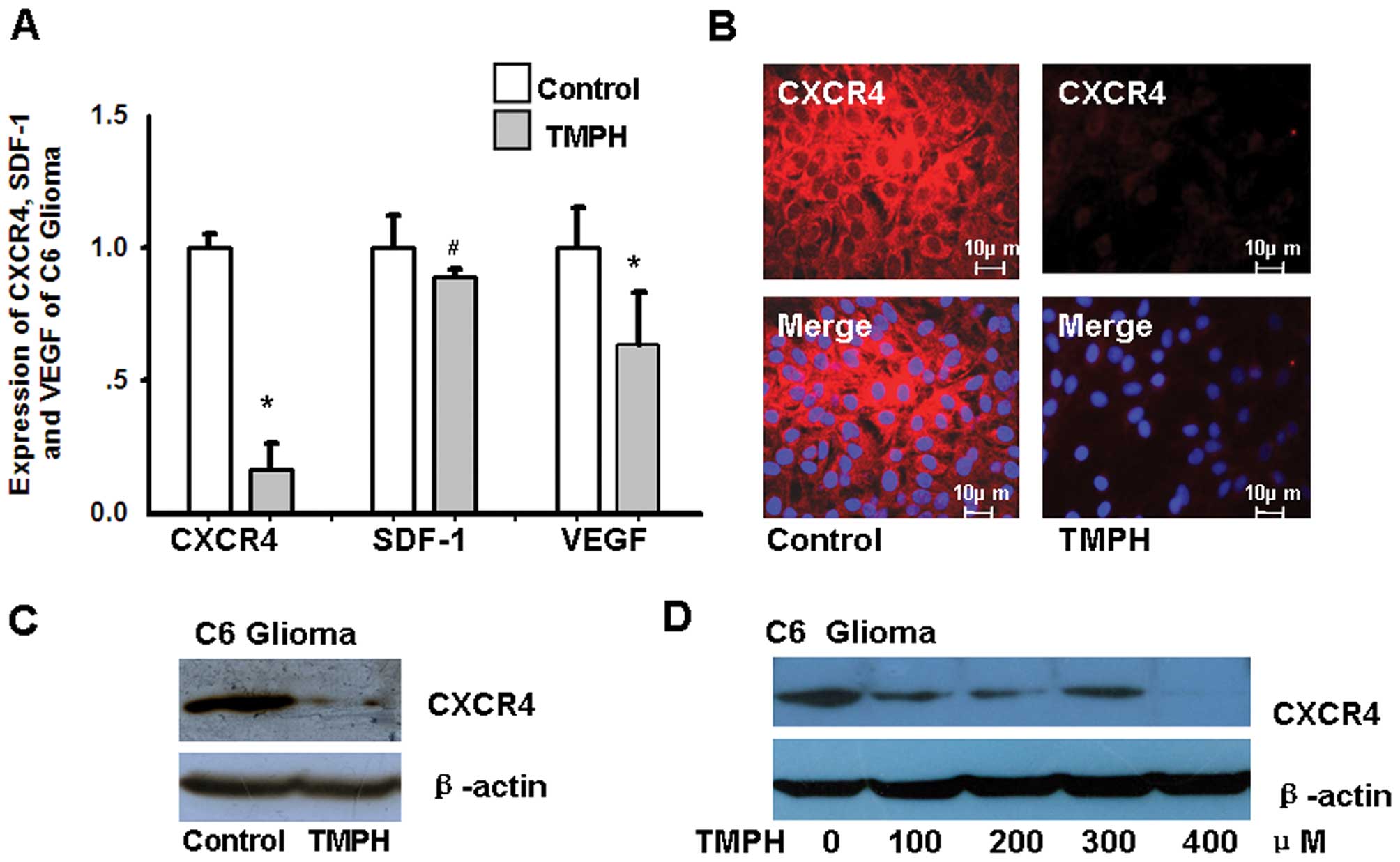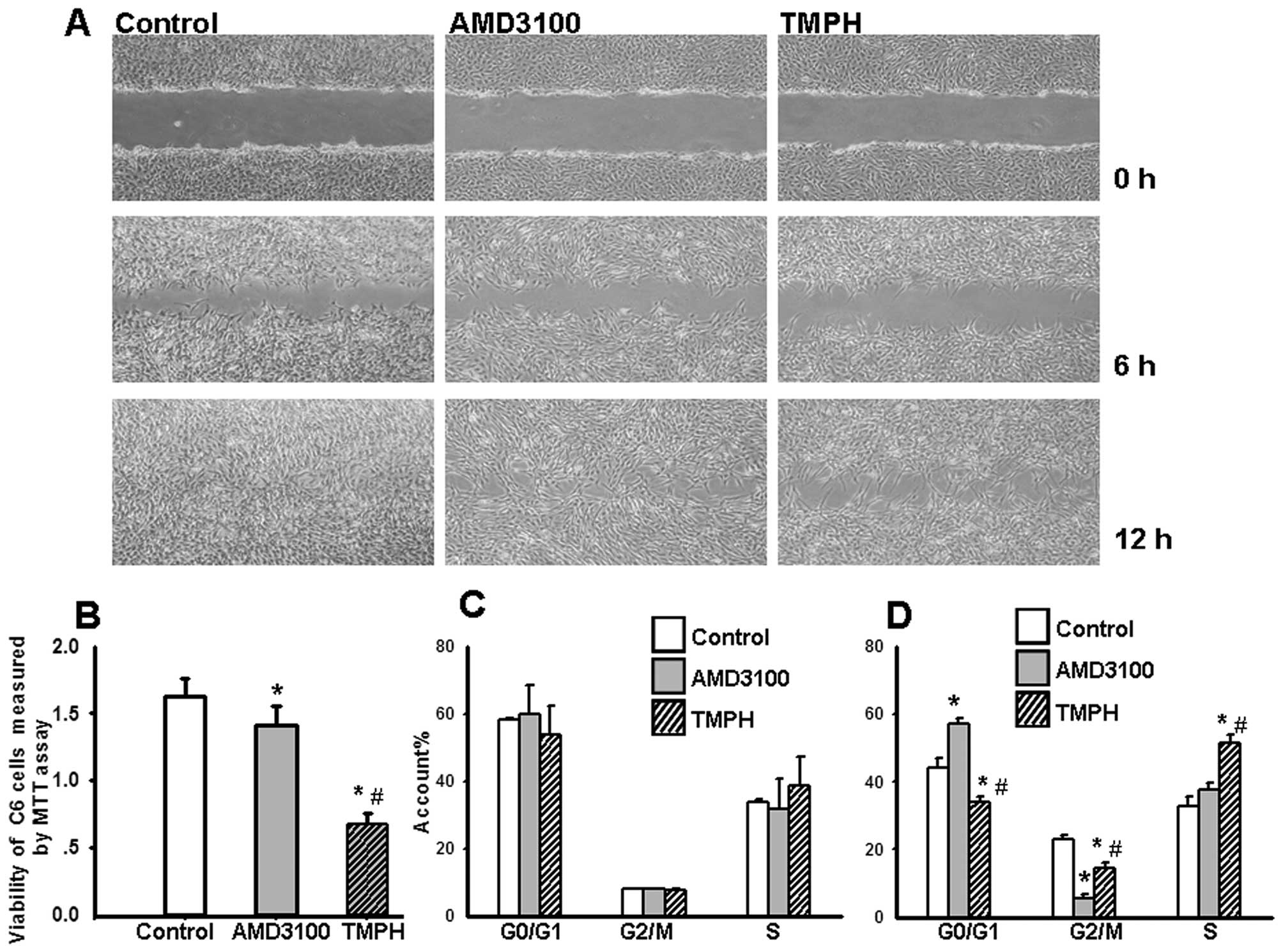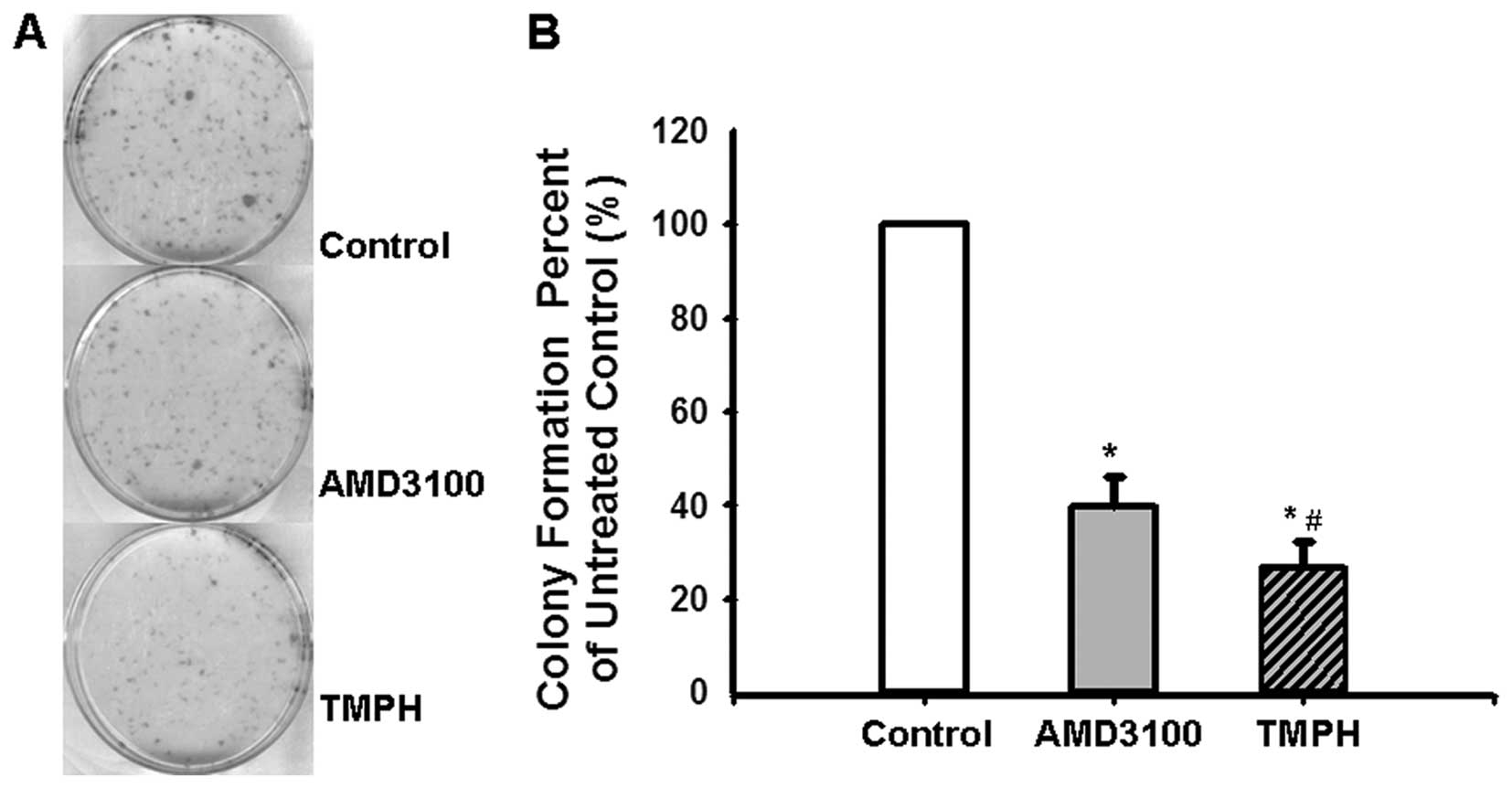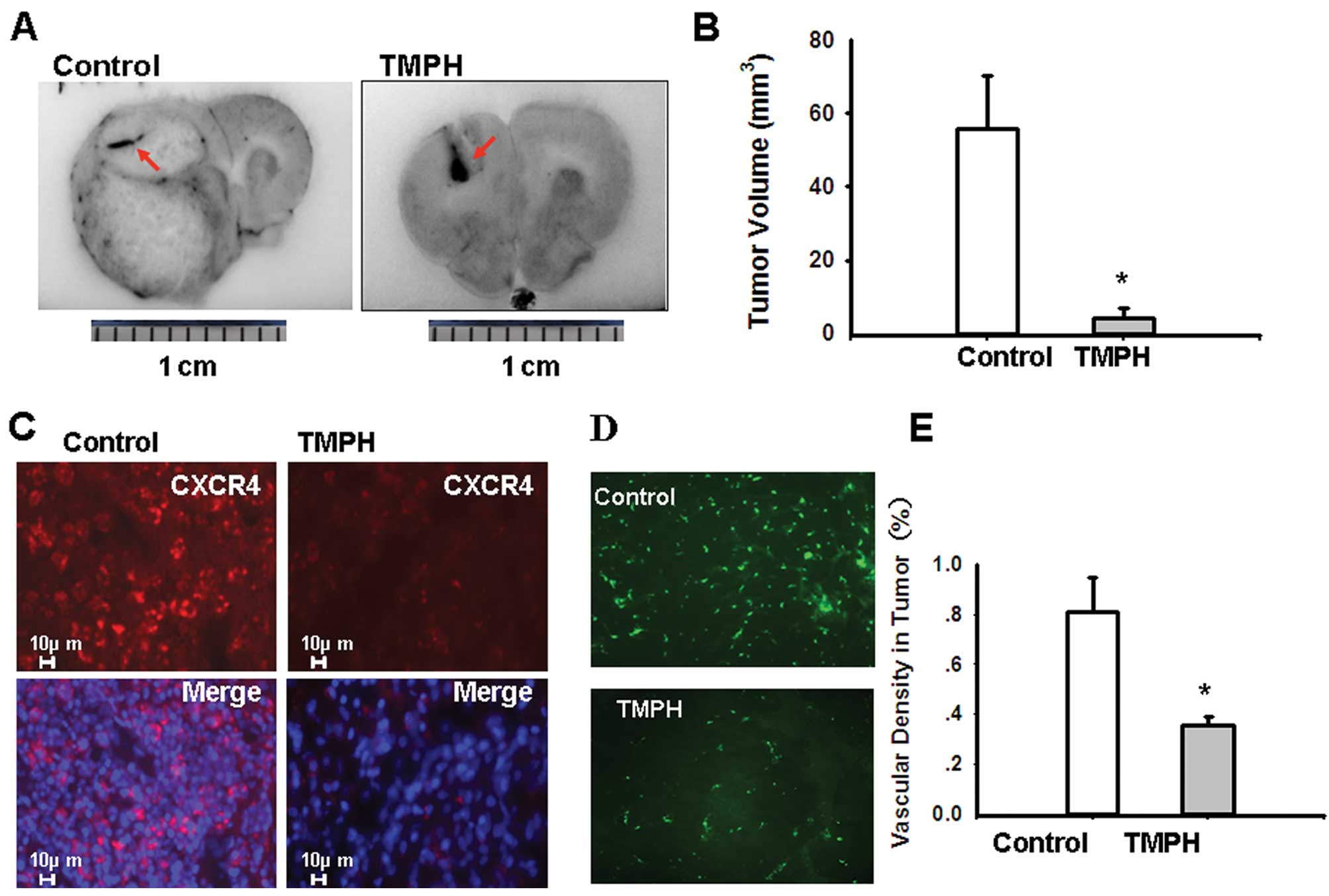|
1
|
|
|
2
|
Liu SF, Cai YN, Evans TW, et al:
Ligustrazine is a vasodilator of human pulmonary and bronchial
arteries. Eur J Pharmacol. 191:345–350. 1990. View Article : Google Scholar : PubMed/NCBI
|
|
3
|
Shen SY, Fu XD and Fei ZY: Assessment and
explorations on the mechanism of neuroprotection of patients in
ischemic stroke by traditional Chinese medicine. Chin J Integr Med.
11:237–240. 2005.(In Chinese).
|
|
4
|
Han Z, Wang Q, Gao F, Ren Y and Yang KJ:
The clinic evaluation of treatment of Ligustrazine and Radix
Astragalus to 36 patients. J Fourth Military Medical University.
27:1207–1209. 2006.(In Chinese).
|
|
5
|
Wang XB, Wang SS, Zhang QF, et al:
Inhibition of tetramethylpyrazine on P-gp, MRP2, MRP3 and MRP5 in
multidrug resistant human hepatocellular carcinoma cells. Oncol
Rep. 23:211–215. 2010.PubMed/NCBI
|
|
6
|
Mei Y, Shi Y, Zuo G, Gong J and Liu C:
Study on ligustrazine in reversing multidrug resistance of
HepG2/ADM cell in vitro. Zhongguo Zhong Yao Za Zhi. 29:970–973.
2004.PubMed/NCBI
|
|
7
|
Li Z, Shao M, Zhou Y, Wei R and Gong Y:
Resistance-related protein in rectal cancer tissue expression and
significance of combination chemotherapy with Ligustrazine. Int Med
Health Guidance News. 2:142–144. 2010.(In Chinese).
|
|
8
|
Li L, Xu K, Liu Y, Zheng J, Qiu S and Liu
C: The clinic evaluation of treatment of percutaneous implantation
of radioactive particles with the TMP to 20 patients with malignant
cancer by CT-guided. Shaanxi J Trad Chin Med. 29:542–544. 2008.
|
|
9
|
Wu Y, Dai X, Hu P and Chen Z: The
progresses of Chinese traditional medicine on brain tumors. J New
Chin Med. 38:76–79. 2004.
|
|
10
|
Fu YS, Lin YY, Chou SC, et al:
Tetramethylpyrazine inhibits activities of glioma cells and
glutamate neuro-excitotoxicity: potential therapeutic application
for treatment of gliomas. Neurooncology. 10:139–152. 2008.
|
|
11
|
Li M, Handa S, Ikeda Y and Goto S:
Specific inhibiting characteristics of tetramethylpyrazine, one of
the active ingredients of the Chinese herbal medicine ‘Chuanxiong’,
on platelet thrombus formation under high shear rates. Thromb Res.
104:15–28. 2001.PubMed/NCBI
|
|
12
|
Liu Y, Ren J, Jiang H, Du S and Zhang Y:
The influenced foundation of hemodynamics during recovery of blood
stasis rats by gustrazine and angelica parenteral solution. Chin J
Med Physics. 22:680–681. 2005.
|
|
13
|
Zhou Y, Larsen PH, Hao C, et al: CXCR4 is
a major chemokine receptor on glioma cells and mediates their
survival. J Biol Chem. 277:49481–49487. 2002. View Article : Google Scholar : PubMed/NCBI
|
|
14
|
Wang X and Chen X: Study on the effects of
tetramethylpyrazine on tumor cells: survey and prospects. Zhongguo
Zhong Yao Za Zhi. 28:295–298. 2003.PubMed/NCBI
|
|
15
|
Muller A, Homey B, Soto H, et al:
Involvement of chemokine receptors in breast cancer metastasis.
Nature. 410:50–56. 2001. View
Article : Google Scholar : PubMed/NCBI
|
|
16
|
Righi E, Kashiwagi S, Yuan J, et al:
CXCL12/CXCR4 blockade induces multimodal antitumor effects that
prolong survival in an immunocompetent mouse model of ovarian
cancer. Cancer Res. 71:5522–5534. 2011. View Article : Google Scholar : PubMed/NCBI
|
|
17
|
Ping YF, Yao XH, Jiang JY, et al: The
chemokine CXCL12 and its receptor CXCR4 promote glioma stem
cell-mediated VEGF production and tumour angiogenesis via PI3K/AKT
signaling. J Pathol. 224:344–354. 2011. View Article : Google Scholar : PubMed/NCBI
|
|
18
|
Kioi M, Vogel H, Schultz G, et al:
Inhibition of vasculogenesis, but not angiogenesis, prevents the
recurrence of glioblastoma after irradiation in mice. J Clin
Invest. 120:694–705. 2010. View
Article : Google Scholar : PubMed/NCBI
|
|
19
|
Terasaki M, Sugita Y, Arakawa F, Okada Y,
Ohshima K and Shigemori M: CXCL12/CXCR4 signaling in malignant
brain tumors: a potential pharmacological therapeutic target. Brain
Tumor Pathol. 28:89–97. 2011. View Article : Google Scholar : PubMed/NCBI
|
|
20
|
Schulte A, Gunther HS, Phillips HS,
Kharbanda S, Soriano RH, Modrusan Z, Zapf S, Westphal M and Lamszus
K: A distinct subset of glioma cell lines with stem cell-like
properties reflects the transcriptional phenotype of glioblastomas
and overexpresses CXCR4 as therapeutic target. Glia. 59:590–602.
2011. View Article : Google Scholar : PubMed/NCBI
|
|
21
|
Schulte A, Gunther HS, Phillips HS, et al:
CXCL12 (SDF1alpha)-CXCR4/CXCR7 pathway inhibition: an emerging
sensitizer for anticancer therapies? Clin Cancer Res. 17:2074–2080.
2011. View Article : Google Scholar : PubMed/NCBI
|
|
22
|
Calì C and Bezzi P: CXCR4-mediated
glutamate exocytosis from astrocytes. J Neuroimmunol. 224:13–21.
2010.PubMed/NCBI
|
|
23
|
Cartier L, Hartley O, Dubois-Dauphin M and
Krause KH: Chemokine receptors in the central nervous system: role
in brain inflammation and neurodegenerative diseases. Brain Res
Brain Res Rev. 48:16–42. 2005. View Article : Google Scholar : PubMed/NCBI
|
|
24
|
Zhou Q, Kiosses WB, Liu J and Schimmel P:
Tumor endothelial cell tube formation model for determining
anti-angiogenic activity of a tRNA synthetase cytokine. Methods.
44:190–195. 2008. View Article : Google Scholar : PubMed/NCBI
|
|
25
|
Paxinos G and Watson C: The rat brain in
stereotaxic coordinates. 2nd edition. Academic Press; San Diego,
CA: pp. 567–572. 1986
|
|
26
|
Redjal N, Chan JA, Segal RA and Kung AL:
CXCR4 inhibition synergizes with cytotoxic chemotherapy in gliomas.
Clin Cancer Res. 12:6765–6771. 2006. View Article : Google Scholar : PubMed/NCBI
|
|
27
|
Rubin JB, Kung A, Klein RS, et al: A
small-molecule antagonist of CXCR4 inhibits intracranial growth of
primary brain tumors. Proc Natl Acad Sci USA. 100:13513–13518.
2003. View Article : Google Scholar : PubMed/NCBI
|
|
28
|
Egeblad M and Werb Z: New functions for
the matrix metalloproteinases in cancer progression. Nat Rev
Cancer. 2:161–174. 2002. View
Article : Google Scholar : PubMed/NCBI
|
|
29
|
Shoemaker RH, Wolpert-DeFilippes MK, Kern
DH, et al: Application of a human tumor colony-forming assay to new
drug screening. Cancer Res. 45:2145–2153. 1985.PubMed/NCBI
|
|
30
|
Nigris Fd, Crudele V, Giovane A, et al:
CXCR4/YY1 inhibition impairs VEGF network and angiogenesis during
malignancy. Proc Natl Acad Sci USA. 107:14484–14489. 2010.
View Article : Google Scholar : PubMed/NCBI
|


















